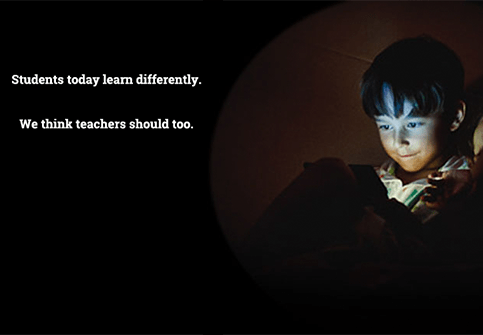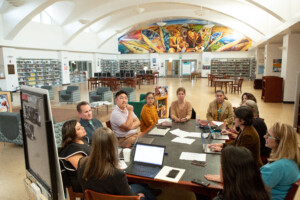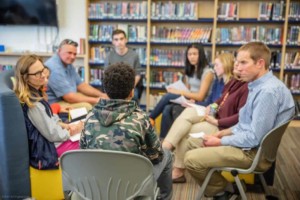New Routes to the Classroom: Online Teacher Prep

When you ask teachers about how they got to the classroom, you find a variety of influencers and passions, but most took a traditional path of preparation to the classroom. However, the personalized future of learning requires a blended, personalized, and competency-based approach to teacher preparation and development–and we think that means better conditions and career options for teachers.
If we want more students to experience powerful learning, we need to create development pathways that allow school and district leaders to benefit from the same blended, competency- based and deeper learning experiences that they seek to create for students. In Preparing Leaders for Deeper Learning, Digital Promise and Getting Smart describe a vision for the future of education leader preparation and development that would address the current gap between principal preparation and the environments in which they will serve and share examples of programs and organizations guiding the way toward a new system of leadership development.
TEACH-NOW from the Educatore School of Education is an example of innovative, learn by doing, online teacher prep and certification program that provides an interactive collaborative and efficient certification option for next-gen educators.
Backstory. Dr. Emily Feistritzer has been a leader of the alternative teacher certification movement since the mid-1980s. TEACH-NOW was initiated with seed investment from New Schools Venture Fund in November 2011. The 9-month, 8-module TEACH-NOW prep program was accredited and approved by the District of Columbia in February 2013 and began with 10 candidates in March 2013.
In July, the Educatore School of Education was approved as Institution of Higher Education in DC paving the way for a 12 month master’s degree.
President Philip Schmidt joined TEACH-NOW in July after 13 years leading WGU’s top rated Teachers College serving 14,000 candidates and the largest STEM teaching programs in the country (see feature).
The Program. The TEACH-NOW curriculum is designed to encourage a learn by doing model that takes a collaborative approach to digital learning. The leadership and instructional team are dedicated to their pedagogical structure that pairs a collaborative approach with the right technology. The program is cohort based and provides an activity and project-based learning environment while still 100% online. The main idea is that educators must learn to become teachers of the 21st century with classrooms full of 21st century students. Teachers should have experience with the 21st century education that they will be providing.
TEACH-NOW candidates come from all over the world (nearly 40% are international) and come to the program for a variety of reasons:
- Undergraduates. Candidates typically have an undergrad background with a 3.0 gpa, but they don’t have any background in teacher education. They choose from a nine month certification option or a 12 month master’s program that leads to a certification. The master’s in education has two foci: one in education research and the other is in globalization and international education.
- Working Educators. These folks are interested in Master’s degree, but are not interested in certifications (someone who is already teaching, interested in working in private schools, interested in understanding how schools operate).
Candidates can receive a master’s in education research or globalization and international education, but the TEACH-NOW team is anticipating a growing number of focus areas including: Leadership, Special Education, Second Language Education, and STEM. TEACH-NOW is accredited and approved by DC’s Office of State Superintendent of Education (OSSE) and can add new degrees as they are developed, however they are taking their time to ensure that they add on foci thoughtfully.
The Platform. When the curriculum was in infancy, the TEACH-NOW team came to the conclusion that if they were seeking to design a new approach to teacher development, then they would need to create their own platform. Schmidt describes the platform as, “hand crafted and exactly what we need.” They spent most of two years with developing and implementing a careful growth model. They constantly tested the platform to ensure that it ran smoothly and supported the curriculum in the way in which it what designed. As they look forward to more aggressive growth, they are confident in the platform to do its job — from both a tech angle and in the way that it meets their unique needs.
For more check out:
- New Thinking On Leadership Development: Mindsets, Investment, Diversity, and Responsiveness
- Leadership Development in US Schools: The Opposite of Good
Stay in-the-know with all things EdTech and innovations in learning by signing up to receive the weekly Smart Update.








0 Comments
Leave a Comment
Your email address will not be published. All fields are required.